Basic Examples
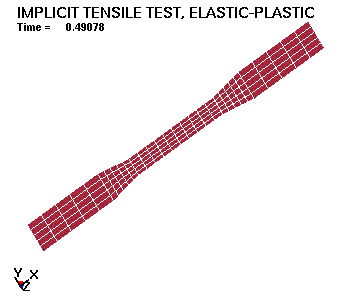
Basics I
A static tensile test is simulated using shell elements. One end of the specimen is constrained, while concentrated nodal loads are applied at the other end. Uniform stresses develop in the narrowed center section.
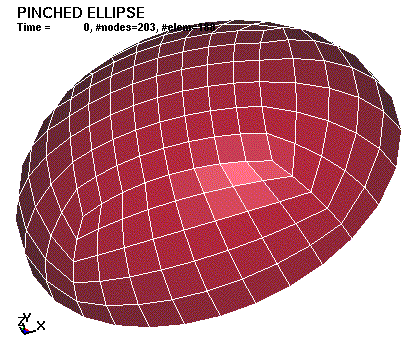
Adaptive
A static load is applied to the center of an ellipsoidal dome. Shell elements are used. Nodes at the base of the dome are constrained, and included in a NODFOR output database. Adaptivity is used to automatically refine the mesh in areas of high curvature.
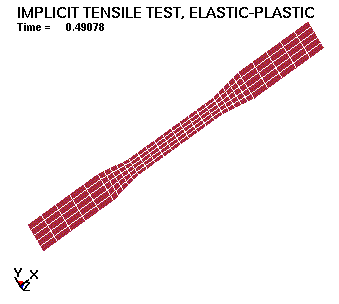
Basics II
A static tensile test is simulated using shell elements and a nonlinear, elastic-plastic material model. One end of the specimen is constrained, while concentrated nodal loads are applied at the other end. Uniform stresses develop in the narrowed center section.
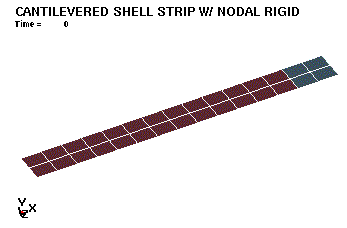
Basics III
A tip load is applied to a cantilevered beam made of shell elements. The tip of the beam is constrained to be rigid.
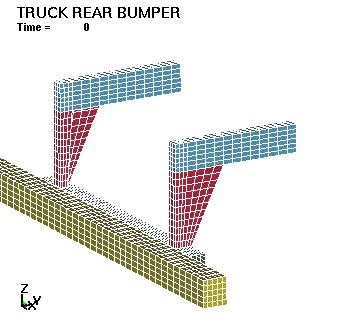
Contact I
The rear bumper of a truck is modeled using shell elements. A solid, rigid bar is displaced into the bumper, causing plastic buckling of the support. Post-buckling response is determined.
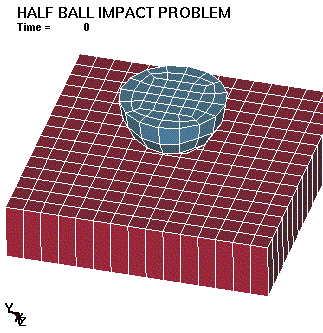
Contact II
A hemispherical ball of brick elements is displaced into a plate of brick elements. The plate is supported around its edges.
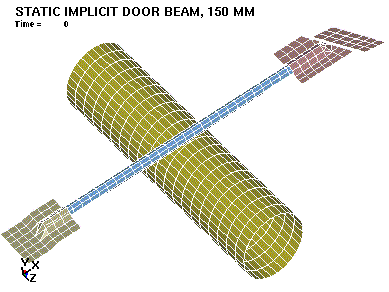
Springback I
A doorbeam subassembly is deformed by a rigid pole. Shell elements are used throughout, and nodal rigid bodies are used to spotweld the components of the doorbeam. The pole is displaced to deform the doorbeam, then retracted to evaluate springback.
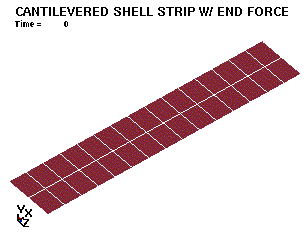
Springback II
This exercise involves two simulations. First, a cantilevered strip of shell elements is loaded using a dynamic explicit simulation. An output file named dynain is created at the end of this simulation. A second, implicit simulation is then performed which reads the dynain file and computes the springback deformation.
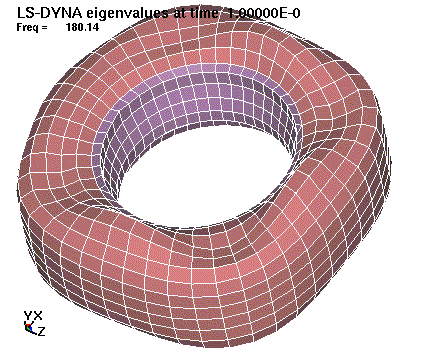
Eigenvalue
A coarsely meshed wheel and tire assembly is 'kicked' by a brief transient load. The dynamic response of a node at the top of the tire is monitored.
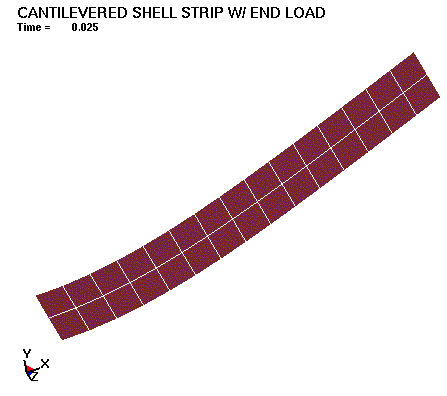
Impl Expl Switch
A cantilevered strip of shell elements is loaded using the static implicit method. The analysis type is then switched to explicit, the load is removed, and the dynamic response is simulated. The first fundamental response frequency is verified by eigenvalue analysis.
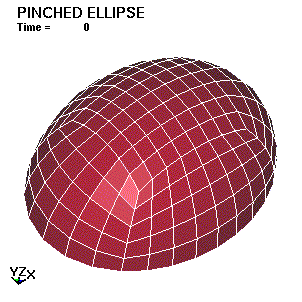
Section
A static load is applied to the center of an ellipsoidal dome. Shell elements are used. Nodes at the base of the dome are constrained, and included in a NODFOR output database.
